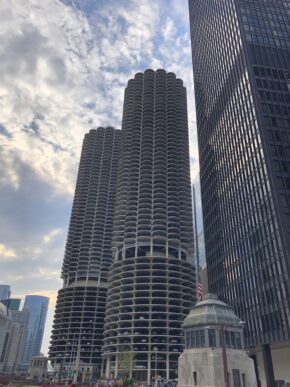Last week, I wrote a column that tried to tell it like it is. The world we inhabit, one that revolves around photography, is painfully un-diverse. Here in the United States, those in the profession are very, very likely to only interact with others of a similar background. (And skin color, sadly.)
While I left room for the exceptions, the fact that there seem to be so few is troubling. How do we change this? Whether it’s people complaining about all-white competition-jurys, all-male Superbowl commercials, or writers like me scrambling to review books by women and minorities, the numbers are obviously skewed. What to do?
The only answer I’ve been able to glean is to do some boots-on-the-ground style outreach. As I’ve said before, I spent seven years teaching photography to at-risk minority youth. I’ve done the work, and seen how easily art concepts can become embedded in young minds of any color or gender.
Another tried-and-true methodology is to honestly examine one’s own biases, and then try to challenge them. Most of us have a hard time admitting to negative preferences or stereotypes. Not a pleasant conversation to have with oneself.
Looking inward, I had to admit I was biased against Texans. (Here in New Mexico, it’s a state passion.) As I mentioned in a column a month or so ago, after years of seeing Texan plates on personal Tour Buses towing Hummers, it was easy to get angry. Throw in the bluster and big belt-buckles, and I can honestly say I was proud of the hate.
Whether geographically, racially, or gender-based, it’s not OK to dislike people en masse. (Obviously.) So I was thrilled to spend a little time in Houston last year, and realize that my pre-conceptions were off. I didn’t hate Texans, just the folks in the Dallas to Amarillo corridor. And even in Texas, that seems to be an established sentiment. (Yes, I am now mostly joking.)
As much as I enjoyed last year’s taste of Texas toast, I was thrilled to have the opportunity to re-visit H-town last week. I even planned a little road trip up to Central Texas for a quick visit to über-hip Austin. (Did I listen to some country music along the way? You bet I did. KNRG, the Renegade, is all Texas music, all the time. The first three songs I heard were all anti-urban. (Including a hysterical mockery of the aforemetioned Dallas.))
To be clear, this article is but an introduction to a series, like we did with San Francisco late last year. (How’s that for polar opposites?) I saw some fantastic art exhibitions, met with some intelligent, friendly and unpretentious art professionals, and ate some truly amazing food. Basically, I had a great time. From Texas hater to convert in 10 short months.
Before I leave you, though, I want to share one of my thin-sliced-stereotypical observations. I can’t take advantage of it myself, being chained by mortgage and blood to this extraordinary piece of rural paradise I call home. But some of you can. So here it goes.
Houston is the fourth largest city in the United States. The three cities above it, NYC, LA, and Chicago, are famously expensive. Houston is not. They are also known for exclusivity, and make it difficult to break into established networks, lacking the proper school connections and/or friend lists. Houston is extremely open and accessible, from what I’ve seen. (And the FotoFest Biennial provides entry to all comers.)
Beyond that, Houston has the kind of financial and cultural resources that exist in very few places in the world. Its economy is booming, and ought to continue to grow, as the energy sector is unlikely to wither. The port, connected to the city via the shipping channel, is also thriving. (And global trade is not going away any time soon.) The unemployment rate is below 6%, and the median income is over $70,000 per year. (Thank you for the statistics, Houston Public Radio.) Essentially, the place is leaking money.
The city is vast and diverse, with massive immigrant and minority communities, including Vietnamese, African-American, and Latino. It’s like a Texan Los Angeles in scope, minus the mountains and oceans. (Of attitude.) It’s the perfect place to encounter those from backgrounds different than yours: a city where biases go to die.
I noticed vacant commercial real estate everywhere; storefronts just waiting to be turned into artist-run galleries or commercial photo studios. I also spoke with an artist/curator who produces art shows for those downtown mega-corporate-skyscrapers that I mentioned in last year’s article. While state funding for the arts has been cut, (it is still Texas,) the public-private combination seems to offer insane amounts of cash and opportunities for the local community.
In the parlance of economics, Houston is an undervalued resource: a city just waiting for a fresh round of hipster-style-gentrification. And if you doubt me, you can trust Forbes magazine, which listed Houston as the coolest city in America in 2011. I’m not sure what their criteria was, and it’s likely to be very different from mine. (As Forbes itself is actually uncool.) But you can bet there will be a proverbial gold rush of 20-something energy-sector/hedge-fund yuppies who’ll rush down there due to Forbes’ blessing.
Who are they to you? Will they be your new friends, if you move to H-town? Probably not. Would you find them “cool,” in their khakis and button down polo shirts? It’s unlikely. (Again with the stereotyping.) But might they make up the bulk of your collector base, or client base, for decades to come? Now you’re getting the picture.




8 Comments
HI Jonathan,
I would like to read second account of your thoughts on Houston after spending a week in August there. :)
Johnson,
I just wanted to point out one small niggle about all those “Texan license plates on personal Tour Buses towing Hummers”. While I don’t doubt there are a lot of them, I think you should know that most probably don’t actually live in Texas. I discovered this while working on my “Life on Wheels” The New American Nomads” project about full-time RV life. Since Texas does not charge registration fees for RV’s, full-timers (who don’t live in any state full-time) become residents so they can avoid this cost. You might also notice lots of South Dakota plates as well. Same deal. I have heard (though not confirmed) from several full-timers that health care is much cheaper to Texas residents as well.
As for the personal tour busses with hummers, well, they may well represent a smaller carbon footprint that our own personal homes and vehicles – though I do hate hummers as much as the next guy.
Looking forward to the rest of your series on Texas.
My best to you.
Oops,
That was supposed to read Jonathan at the top.
We got it David :)
Houston – my hometown! I definitely agree with Tom’s comment about the summertime. So brutal. Having said that – life in Houston, while boring, is pretty easy. Good food, cheap rent, all the perks of a big city, and a surprisingly vibrant museum/art scene.
Also, I thought I’d point out that Houston has produced some fine photographic talent such as Mark Seliger, Todd Cole, Kenneth Cappello, David Black, and yours truly. I’m sure there are more that I don’t know about as well. Yee-haw!
Don’t forget other great Texas talent: Robb Kendrick, Joe Baraban, Terry Vine, Arthur Meyerson and Danny Turner
There is nothing wrong with a nice hummer.
Hey Jonathan,
As a native of Houston, I’m happy my city could convert your hate filled heart to one that only hates cities of Texas that don’t really matter (Cheers El Paso) I’m moving back home to break into the photography industry myself, and though I know my work has a long way to go, your column fills me with excitement. I didn’t realize how lucky I am. I’ll be sure to take advantage of all the untapped resources my dear city has to offer.
Comments are closed for this article!